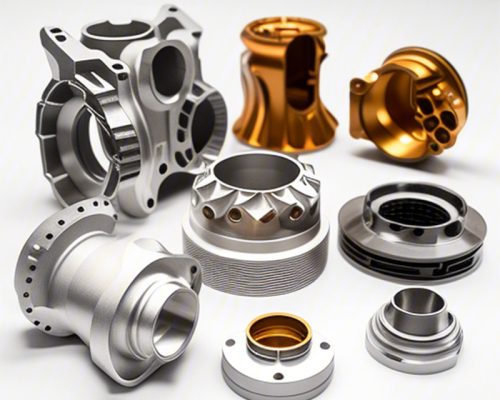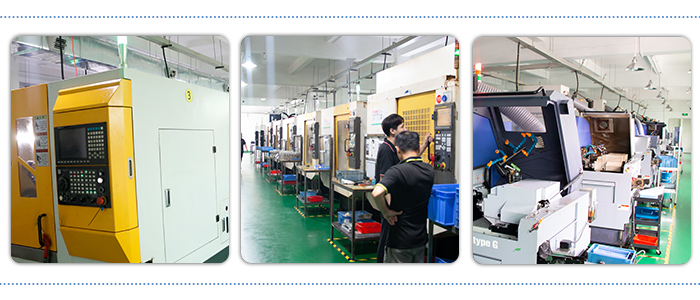In my experience working with CNC machining projects at YL-Machining, ensuring top-notch quality control for CNC machined parts is as much an art as it is a science. If you’ve ever faced issues with inconsistent dimensions, poor surface finishes, or unreliable lead times, you’re not alone. These problems can wreak havoc on your production schedules and customer satisfaction. In this comprehensive guide, I’ll share actionable strategies and insights on how to implement and maintain quality control in CNC machining, tailored to help you overcome these challenges.
1. Understanding the Importance of Quality Control in CNC Machining
Why does quality control matter so much in CNC machining? It’s because CNC machining is often used for producing critical components where even the smallest deviation can lead to significant problems. Imagine a medical implant or an aerospace part that doesn’t meet specifications—catastrophic consequences, right? This is why quality control should be a priority, not an afterthought.
Key considerations:
- Dimensional Accuracy: Tolerances as tight as ±0.001 inches may be required for certain parts.
- Material Properties: Ensuring the right material with proper hardness and resilience is used.
- Consistency: Every part produced should meet the same quality standards.
A question for you: How confident are you in your current quality control processes? If you’re unsure, keep reading.
2. Setting Up the Right Inspection Systems
The foundation of quality control starts with having the right inspection systems in place. From my perspective, here’s what you need to focus on:
2.1. Pre-Production Inspection
Before production begins, inspect the raw materials. Verify certifications and material properties. If you skip this, no amount of precision machining can make up for substandard materials.
Checklist:
- Material certifications (e.g., hardness, tensile strength).
- Dimensional inspection of raw stock.
- Visual checks for surface defects.
2.2. In-Process Inspection
Continuous monitoring during production is key to catching errors early. At YL-Machining, we use automated measurement tools like Coordinate Measuring Machines (CMMs) to ensure precision at every stage.
Techniques to consider:
- Real-time dimensional checks using laser scanners or probes.
- Sampling parts at regular intervals.
- Monitoring tool wear to avoid dimensional drift.
2.3. Post-Production Inspection
After the machining is done, every part must be inspected against the final design. This involves a combination of manual and automated checks.
Examples of post-production inspections:
- Dimensional accuracy tests with micrometers or CMMs.
- Surface roughness tests using profilometers.
- Visual inspection for cosmetic defects.
3. Leveraging Advanced Technologies for Better Quality
Technology has revolutionized CNC machining quality control. At YL-Machining, we’ve adopted these cutting-edge techniques:
3.1. Digital Twins
A digital twin is a virtual replica of your part. By simulating machining processes, we can predict potential issues before they occur.
3.2. Machine Learning Algorithms
With machine learning, CNC machines can adapt in real-time to variations, ensuring consistent quality throughout the production run.
3.3. Non-Destructive Testing (NDT)
For critical components, NDT methods like ultrasonic testing can ensure there are no hidden defects without damaging the part.
4. Training and Workforce Expertise
Even with the best technology, human expertise remains essential. I can’t stress enough how crucial it is to train your team in quality control principles.
Key training areas:
- Interpreting engineering drawings and GD&T symbols.
- Mastery of inspection tools like micrometers and CMMs.
- Problem-solving techniques for defect analysis.
Tip: Regular workshops and certification programs can keep your team updated on industry best practices.
5. Common Challenges and How to Overcome Them
Here are some common issues I’ve encountered and solutions that have worked for us:
Challenge 1: Tight Deadlines
When you’re racing against the clock, quality often takes a hit. Solution? Invest in automated inspection systems that speed up the process.
Challenge 2: Material Defects
Poor-quality raw materials can ruin even the most precise machining. Work with reputable suppliers and verify materials upon delivery.
Challenge 3: Operator Errors
Even skilled operators can make mistakes. Implementing error-proofing mechanisms like poka-yoke systems can significantly reduce human errors.
6. Building a Quality Culture in CNC Machining
Quality control isn’t just about tools and techniques; it’s a mindset. At YL-Machining, we foster a culture where every team member—from operators to managers—prioritizes quality.
How to build this culture:
- Encourage open communication about quality issues.
- Reward employees for suggesting improvements.
- Make quality a measurable part of every job role.
7. Collaborating with Your CNC Machining Partner
Finally, selecting the right CNC machining partner is critical. At YL-Machining, we emphasize transparency, timely communication, and a shared commitment to quality. Here’s what to look for in a machining partner:
- Proven track record with case studies or references.
- Advanced machining and inspection capabilities.
- Strong after-sales support for addressing any post-delivery issues.
Conclusion: Take Control of Your CNC Machining Quality
Quality control is a continuous journey, not a one-time effort. By focusing on robust inspection systems, leveraging advanced technologies, and fostering a quality-first culture, you can ensure your CNC machined parts consistently meet or exceed expectations.
So, are you ready to transform your quality control process? At YL-Machining, we’re here to help. Reach out to us today, and let’s take your production quality to the next level!



